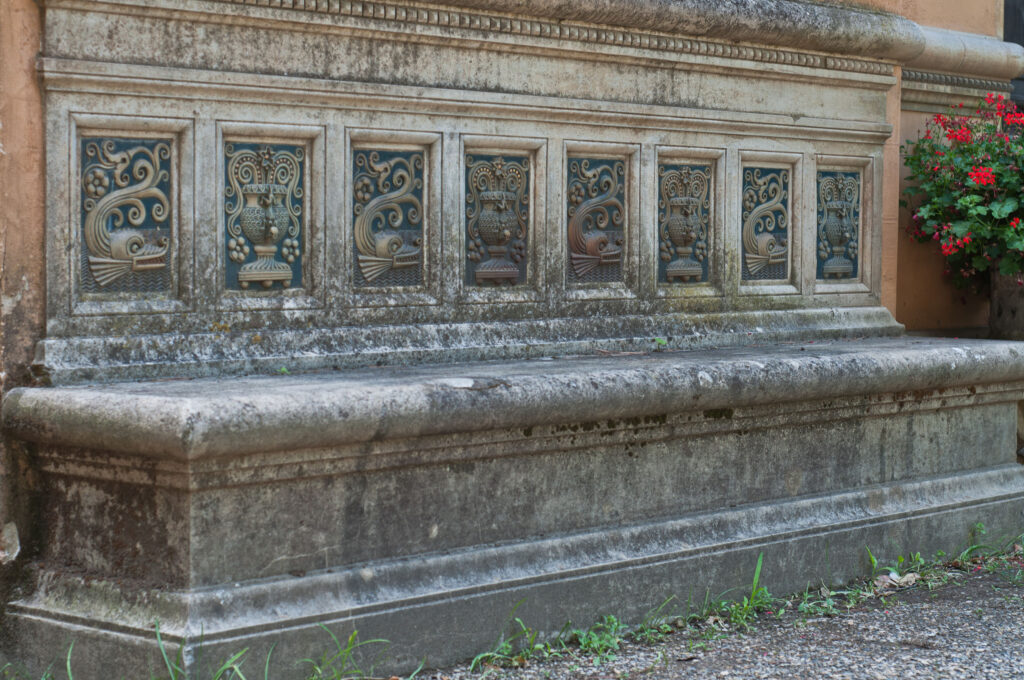Historic center
Montecatini Terme

The town of Montecatini Terme preserves many important testimonials to the creative genius of Galileo Chini.
The first building where Chini intervened was the Salts Pavilion, designed by Giulio Bernardini in 1903 to be used for the sale of the famous Tamerici spa. Bernardini was inspired for this work by the shops of another famous thermal Spa: Bad Kissingen. On the facade of this one story building he placed four gres panels created by Chini’s factory Arte della Ceramica, originally made to decorate his own pavilion at the International Decorative Arts Fair in Turin in 1902. They are bas-reliefs by Domenico Trentacoste: four male figures representing a ceramist’s activity, in the last panel we see Galileo listening to the Muses. Galileo Chini painted the interior with mythological marine subjects, while on the exterior facade below the eaves he painted cherubs and plant essences.
One of the first hotels in town was Hotel La Pace, built in 1870, that promised to provide peace in a time of constant turmoil. In 1901 it was transformed into Grand Hotel & La Pace, also designed by Bernardini who called on Chini to decorate the grand ceiling in the main ballroom. He painted floating female figures, cherubs and trees on a brilliant blue background and later also designed stained glass panels for the entrance.
A high testimony of the multifaceted activity of Chini are the Tamerici spa: named for the trees nearby the natural underground spring discovered there in 1843, property of the Swiss Schmitz family from Livorno. In 1902 the spa was bought by Pietro Baragiola, who founded the Società Nuove Terme. The architects Giulio Bernardini and Ugo Giusti were called to design the new thermal spring spa establishment where Chini was responsible for all the decorations and fixtures: wall decorations, windows, ceramics, skylights, flooring; he used polychrome and luster majolica and developed the aquatic symbolism in a very personal way.
Thanks to its thermal springs, in the early 1900’s Montecatini was a lively town, it had become fashionable and was a very desirable tourist destination. In 1911 the City Council voted to build new Town Hall, but the outbreak of WW1 halted the construction, which resumed in 1918-19. Inaugurated in 1920, Chini leaves an important testimonial: the war had recently ended and his painting on the ceiling of the main staircase gives shape to his moral expectations based on peace, work, wisdom. Chini also designs the skylight and the stained glass that decorated the post office on the ground floor.










